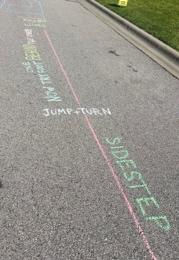Importance of Posture in Children
- All Care Therapies

- Jul 12, 2023
- 1 min read

Children today are facing more postural challenges due to several life factors such as
decreased physical activity, poor nutrition, increased time spent watching TV/playing video
games, heavy backpacks, and increased use of automobile transportation. Poor posture can
lead to decreased development of the core muscles and cause balance issues, muscle
problems, fatigue, joint stiffness, and can even negatively impact handwriting. Some signs of
poor core strength include:
- Resting their head in their non-dominant hand, or laying their head and arm on the
table
- Leaning forward or close to the paper
- Moving around, shifting from side to side or turning their body
- Slouching in their chair
- Having their non-dominant hand hold the chair or hang beside their body
- Appearing tired or complaining of fatigue
A child’s posture should follow the 90-90-90 rule. Their feet should rest flat with a 90-
degree angle at their ankles, their knees should be bent at a 90-degree angle about 1-2 inches away from the chair, and their hips should be at the back of the chair and positioned at a 90-degree angle. Some ways to improve a child’s posture include strengthening core and back muscles, frequent breaks from sitting, and sitting on a dynamic surface such as a therapy ball or wiggle cushion.
References:
Telus health. (n.d.). The importance of posture and positioning for handwriting. Children
Support Solutions. https://childrensupportsolutions.com/the-importance-of-posture-
and-positioning-for-handwriting/.
Quka, N., Stratoberdha, D. H., & Selenica, R. (2015). Risk factors of poor posture in children and
its prevalence. Academic Journal of Interdisciplinary Studies, 4(3), 97.




The importance of posture in children cannot be overstated—good posture supports healthy growth, breathing, and overall well-being. Just as posture strengthens the body, skincare treatments like Hydrafacial Houston help strengthen and rejuvenate the skin, promoting long-term health and confidence